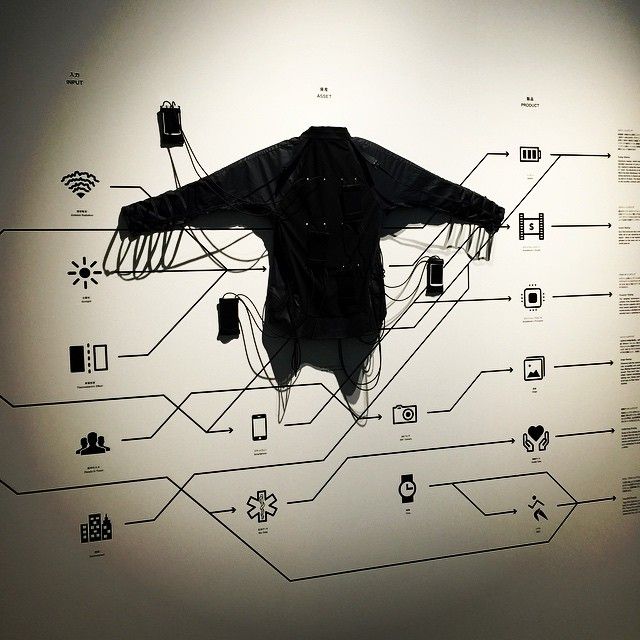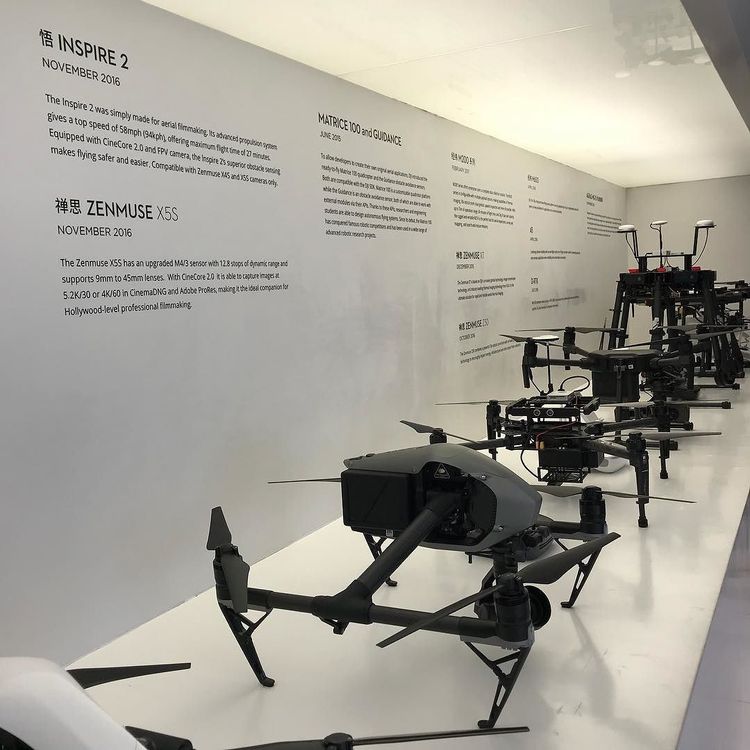Bits to Atoms

Where will science and technology be heading in the next decade? One of my thinking frameworks to analyze and forecast what comes next is to leverage the basic concepts of physics to understand what is going on in the technology business world.
Currently in the market, there is a plethora of technologies known to many in the form of various buzzwords: artificial intelligence (AI), blockchain, autonomous vehicles in the form of self driving cars or drones, quantum computing, gene editing with the advances of CRISPR, materials science and many others. Oftentimes, it is difficult to tear apart where or how they are or intrinsically related to each other.
Most technology breakthroughs came about by adopting a multi-disciplinary perspective. For example, Fermat’s last theorem was solved because there was an intrinsic link between algebra and geometry. The key to solve that problem was to prove that the theorem is a consequence from another in an almost totally unrelated field. If it does not help, the structure of DNA was mapped by biologists experimentally, but Crick and Watson’s discovery of the double helix using crystallography offered the answer to the missing link with the help of physics. The same goes with many quantifiable and well defined problems in business or technology.
My starting point in thinking about technology is deeply rooted on the principles of physics and how the laws of nature work in a physical system. However, I often use physics to build toy models in how I approach a problem in other fields. Hence in the way to think about technology and how it evolves, I used the concept of “bits to atoms” to help me to navigate where we are and how applications in business and society come about.
The concept of “bits to atoms” came from one of the few influential books in my life called “Powers of Ten” which describes the different orders of magnitude from quarks to electrons, electrons to molecules, molecules to larger structures all the way to the Universe, and it was made into a short documentary film directed by Charles and Ray Eames. The order of magnitude method is a very powerful method in physics where we can estimate the answer by virtually thinking of the scale where the answer might lie. It allows us to construct toy models that might reflect the actual reality by putting the quantities which we can measure, and hence we get direct and quantifiable results to our problems. One direct application to business, is that it allows us to scale an operations by putting orders of magnitude and how we can grow efficiently 10x without having to add too much resources to achieve the results which we want and the economists termed it “economies of scale”.
Marc Andreessen’s “software is eating the world” idea needs no introduction. In the past few years, many traditional business have become aware of how digital are beginning to disrupt their supply chain and allow startups to break them by new business models which they cannot counteract without huge cost to their organization. If you examine the recent buzzwords such as fintech or proptech, they are basically the intersection of applying digital technologies into the financial and real estate businesses and most of them are incremental and very few or rare exponential. The reason is that most technologies require a certain amount of “energy” to break out in the form of adoption and marketing, similar to the activation energy for chemical reactions to take place. If you are familiar with Geoffrey Moore’s theory about how technology products have to cross the chasm before gaining mainstream adoption, the analogy here is remarkably similar.
Here’s how I think about technologies from bits to atoms and this framework can be eventually to molecules and beyond with large scale genomics and molecular biology:
Bits to create and shift Bits: Basically, all digital technologies come in the form of electrons moving across transistors and performing computational transactions. Bits are basically information that can be transmit and transfer between objects such as computer networks or people in the form of social networks. In the first two decades since 1993, most of the successful Internet companies are merely using bits to create and shift bits, for example, when you take a photo and upload to instagram or facebook. In a bit to bit world, it is difficult to associate real monetary value and most of the activity spent are in the digital world. That is why for a long time, many investors do not know how to value technology companies such as Google and Facebook as they are basically companies trading the activities of bits to bits.
Of course, the most direct business model for bits to bits is advertising that has been adopted by Google and Facebook. Tencent from China, on the other hand relied on a different business model called micro transactions where they allow their users to buy bits in the form of virtual gifts or add digital inventory within the company’s portfolio of gaming apps such as Honor of Kings.
Bits to understand Atoms: As we create more and more data either through text, image or video, we began to create portraits of the world, and understand the world around us. Hence we are beginning to use bits to understand atoms. For example, using deep learning to identify the objects in the world. In using bits to understand atoms, we began to digitize the world and create a virtual twin or map of the same object. One way of thinking is that we are using bits to digitalize the real physical world so that we can create simulations of different scenarios and situations and experiment the alternative realities of what could have happen.
The business model is in how to leverage the data to drive efficiency in the supply chain or compute the best possible path how best to maximize the returns on the physical twin of the object by experiment different scenarios of the digital twin. In such a situation, we think about how to develop data analytics as a service where businesses can tap and build their data to produce customizable insights.
Bits to shift Atoms: The mobile revolution allowed the bits to begin interacting with the real world. With the evolution of code that interfaces with the objects in the real world, we begin to see how bits can shift atoms. The smartphone is the device that allows users to issue commands in the form of bits to send the communication via cloud services to touch the atoms which are in the form of real world assets such as cars and real estate. The biggest revolution in the past decade is that you can use bits to shift atoms, meaning you can connect a service using an application programming interface (or you will know it commonly as APIs) to make atoms around you to move in the way you want to. Combining with geo-location data and algorithms to efficiently map the driver’s path, you can summon a car with the help of the ride-hailing app. Similarly, with geo-location data and information on homes, you can rent an apartment to stay at any time and place with the ease of a digital payment system.
The current revolution in autonomous vehicles is a direct application of using bits to shift atoms. We leverage on AI to learn the surroundings and use code to steer the vehicle be it a drone or self-driving car to the safest and secure path. It’s simplistic to think of autonomous vehicles as just driving a car using programming, because it requires the computer in the car to recognize human behavior which can be unpredictable and adapt while acting safely on the road within split seconds.
In thinking of using bits to shift atoms, you can think of micro-services such as a drone doing a package delivery from point A to point B, or performing a cleaning service by spraying chemicals to clean a building of a certain set of dimensions. Given the huge cost of hardware at the moment due to slow advances in materials science, using bits to shift atoms have also created asset light companies such as Uber, Wework and Airbnb, where their true value is to reduce the regulatory cost and at the same time, re-calibrate the assets such as taxis (or cars) or rental prices of commercial and real estate spaces.
Bits to create Atoms: The best way to think of this is to imagine the replicator used in the science fiction TV series, Star Trek. The replicator is an imaginary device where it can create any object out of atoms for a specific use. Captain Jean-Luc Picard, a protagonist of the show will say, “Earl Grey tea, hot” and a tea cup or mug with earl grey tea will appear. The closest technology that offers a glimpse on how bits can create atoms is 3D printing and pre-fabrication technologies. As materials science evolve with digitization, the prospects of using bits to create and construct atoms to materials of our choices will become interesting in traditional industries such as construction.
Atoms to create, shift or compute Bits: This might sound counter-intuitive which most people do not realize that the analogue world can provide methods of computation back to the digital world and make it faster. The current digital computer leverages on a simple logic model based on Boolean algebra with ones and zeroes. With the advances of quantum mechanics, one can construct a way to compute using quantum states known as qubits, and to create a quantum computer, you need atoms that can behave in a quantum mechanical way. A quantum computer is able to synthesize all the possible paths of a problem statement and offer the most probable outcomes and at the square root of the speed which a classical computer can do.
As you can see from bits to atoms, you can easily break down and classify technologies in different states and begin to find interesting applications what you can forecast what might come next. One interesting perspective is to find the intersection points between hardware and software particularly, a total vertically integrated model which might disrupt the entire traditional supply chain of an industry.
Picture Credits: A photo I have taken in 2121 Museum in Tokyo, Japan showing the digitization of the real world with the clothing and hardware devices that collect information.
